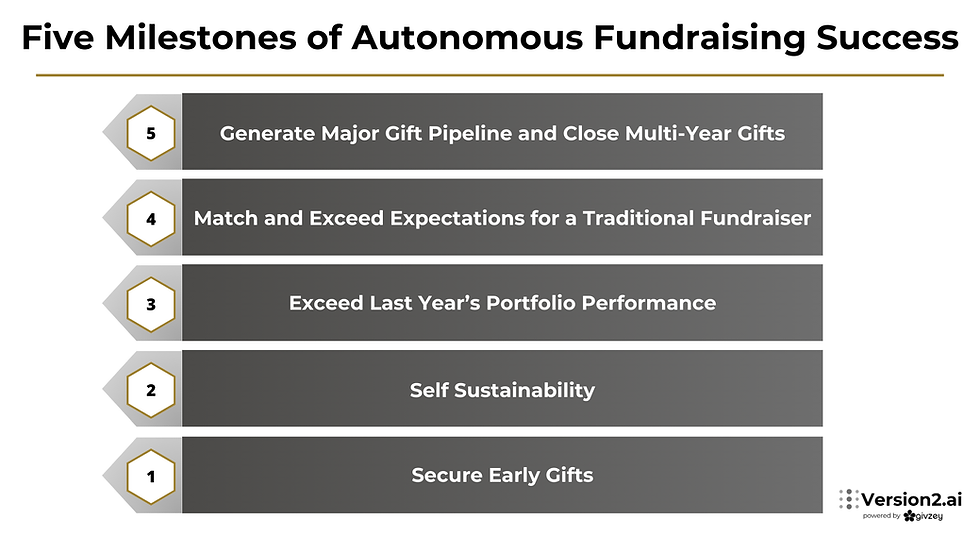A Look Into The Technology Behind Autonomous Fundraising
- Adam Martel
- Oct 21, 2024
- 2 min read
Updated: Nov 4, 2024
My team, our Innovation Partners, and I believe it’s important that fundraising leaders understand not only the why behind autonomous fundraising, but also the how. All autonomous AI follows a framework of sense, solve, and go. Waymo illustrates this beautifully to educate consumers about the decision making process used in their self-driving cars. Understanding this allows us to gain transparency where there’s traditionally a black box.
Traditional fundraisers excel at building relationships, interpreting nuances, and exercising empathy. Intuition, past experiences, and emotional intelligence help them navigate complex donor interactions.
Autonomous Fundraising
Autonomous fundraisers distill patterns and use strategies just as traditional fundraisers do. The difference is they use pattern recognition and Artificial General Intelligence (AGI) rather than career experience. Because autonomous fundraisers use large datasets, advanced algorithms, and Fundraising Neural Nets and Algorithms (FNAs), they can onboard extremely fast and immediately engage multiple donors simultaneously.
Here’s how our team breaks down the framework of autonomous AI specifically for Givzey’s Version2 Virtual Engagement Officer.

Sense
The autonomous fundraiser begins with processing data, including:
Donor Data: giving patterns, preferences, and engagement history
Organizational Data: campaigns, fiscal cycles, and specific organizational goals
Environmental Factors: contextual elements such as the time of year, special events, or external socio-economic factors
Solve
The autonomous fundraiser then evaluates this data to identify the most suitable approach for donor engagement through:
Donor Evaluation: understanding the unique characteristics and preferences of each donor based on their past interactions and giving behavior
Organizational Evaluation: assessing the current state of fundraising campaigns and organizational priorities
Environmental Evaluation: analyzing external factors that may influence donor behavior, such as holidays or economic conditions
Go
Finally, the autonomous fundraiser determines the best type of outreach and takes action. This involves:
Choosing the Right Communication: selecting the appropriate method for outreach (ie. email, text, direct mail) and the nature of the message (cultivation, solicitation, or stewardship)
Executing Engagement: engaging with the donor through the chosen channel, ensuring the message aligns with learned insights
Responding: responding to donor feedback and adjusting strategies in real-time, fostering an ongoing relationship.
I hope this look into what’s typically a “black box” for AI solutions communicates the importance of the collaboration between human fundraisers and autonomous AI to drive meaningful connections with donors–helping them feel more valued and engaged.
.png)


